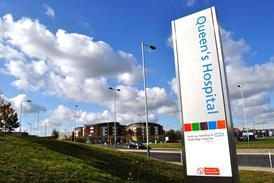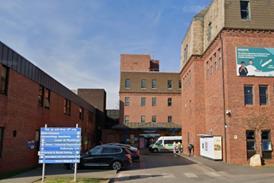Reliance on GP locums must force a rethink on the future workforce to create a positive opportunity to transform general practice, writes Nadeem Moghal
The medical profession is struggling and is always on the look out for the reasons why.
Much of the narrative is focused on doctors choosing part time work to sustain decades long, repetitive, stressful and exhausting careers.
This is especially true of general practice, which is suffering and is in an existential crisis of its own making. Part-time GPs talk of wanting work-life balance, portfolio careers and sustainable lives. What they are effectively saying is ‘I have decided to work as a locum’.
A crisis 16 years in the making
The genesis of the GP workforce crisis took place over 15 years ago.
The government was out negotiated by the British Medical Association in the process of agreeing what became the 2003 GP contract.
The contract saw GPs no longer having to be responsible for out of hours care for their patients or to make house calls, among many other shifts in responsibility. But the most significant resulting change was the growth of salaried positions within practices. This allowed the relatively smaller number of GP partners to retain more of the “profit”.
The salaried GP was seemingly a good addition to the general practice workforce but soon became the disenfranchised workhorse. They have no business management responsibilities or liabilities, but equally do not share in any increased income. They often work just as hard as partners, but without any skin in the game.
The feminisation of the medical workforce and increasing part-time working running in parallel with increasing demand and the relative decline in available workforce, combined with the lack of GP partner positions and the drudgery of life as a salaried GP to collectively alter the sector’s supply-demand economics.
Increasingly, choosing to become a locum seemed like the sensible choice.
The salaried GP, and now the freshly minted graduate of the GP training programmes learned that they could earn over £200,000 pro rata as a locum. Why work full time when for the same or more money you can work part time. You can decide when to work, when to start and finish, what you will and will not do. You do not have to worry about many of the things which was once expected of a GP – test results and document management, attending clinical, governance and business meetings, and surviving the growing tsunami of audits, tick boxes and regulator demands.
The chair of a LMC recently recounted to me that 10 years ago, from a class of 10 GP trainees, three would choose the partner route, six would want to be salaried, and one would decide to be a locum. This year, they added, no-one was likely to want to become partner, maybe two would desire salaried positions, but the rest would go on to be locums.
The problem with locums
The GP locum is generally frighteningly risk averse. Ask any practice manager.
When the locum sits in the clinic room the rate of blood and radiology testing spikes. As do referrals to hospital services. Patients become unnecessarily medicalised. Work volumes of little or no value go up, swamping hospital diagnostics, generating healthy revenues for pathology providers, building ever bigger mountains of results and documents that need reading, judging, and filing.
Locums are not in any team. They come. Turn the wheel. Leave. Yet we are forever reminded – medicine is a team sport.
There is variation in locum dependency across the country. In some regions you can almost hear the feeding frenzy of locum agencies and their human assets.
One of my local practices is haemorrhaging £45k a month on locums. The regular staff are exhausted and forced by economics to rely on part time medical staff. The revenue for services has declined. The costs of pay, pensions and running practices has increased. Like more and more practices, it is in serious trouble and may well close.
Finally there is the issue of quality. The barrier for entry for locums should be predicated on a higher standard but remains low because demand is outstripping supply.
The answer is not, just, more GPs
Full time general practice might be more attractive if there was a better career structure with layered responsibilities as found in other industries. Accountants and lawyers have what they call a commercially competent culture of partners, in which layered hierarchies link to developed responsibilities through a pathway for career growth. That, however, appears a long shot.
More significantly, the crisis has created the opportunity to transform general practice through building a family of professionals from a mix of disciplines, enriching the team and care quality.
We will still need the GP consultant, who would dedicate 70-80 per cent of their time to supervising, mentoring, training, developing the team of advanced nurse practitioners, community psychiatry nurses, physician associates, clinical pharmacists, enhanced physiotherapists, paramedics and social prescribers. As the work gets done by the different professionals, the need for GP locums will decline and the relative attractiveness of a salaried position increase.
Couple the workforce rethink with digital triage and remote management of workflows, and general practice will change fundamentally and for the better.
This is already happening in some practices. In these places, practices have not only become sustainable, but also more successful at building sustainable working lives, more effective at solving patient needs on the day, and better able to face into population and prevention work.
































25 Readers' comments